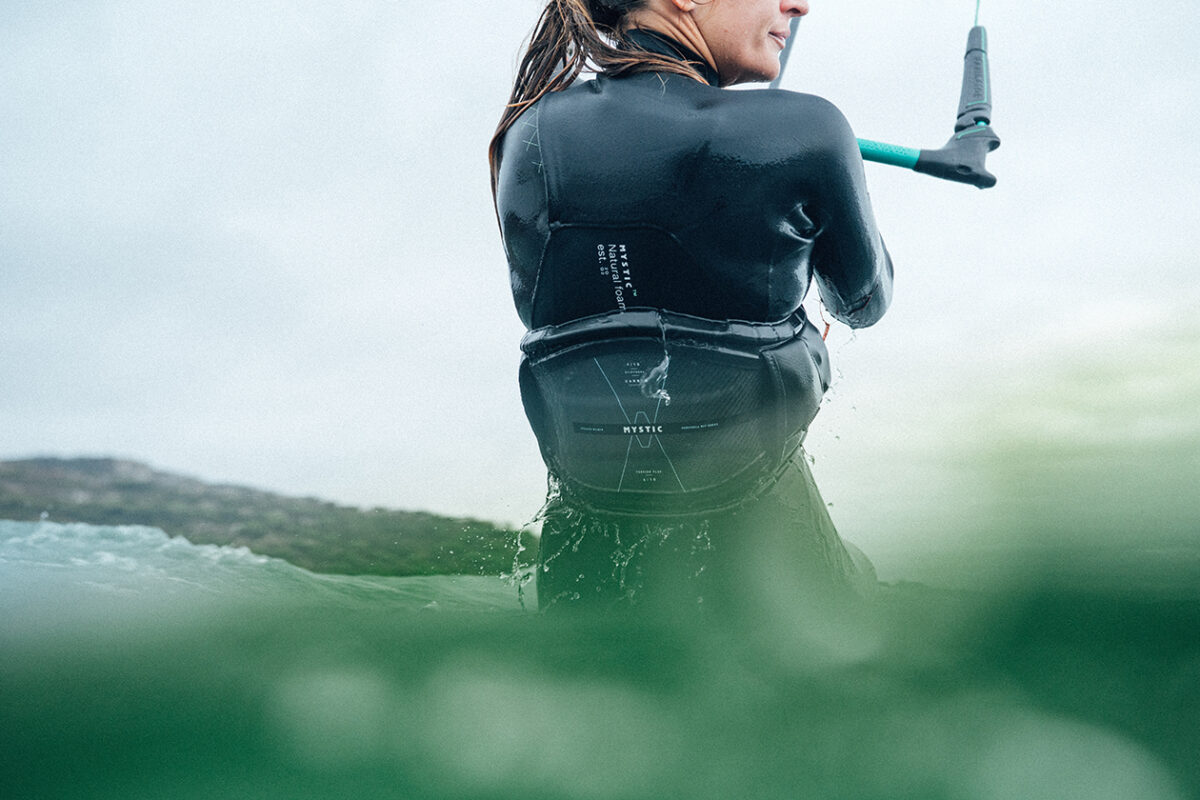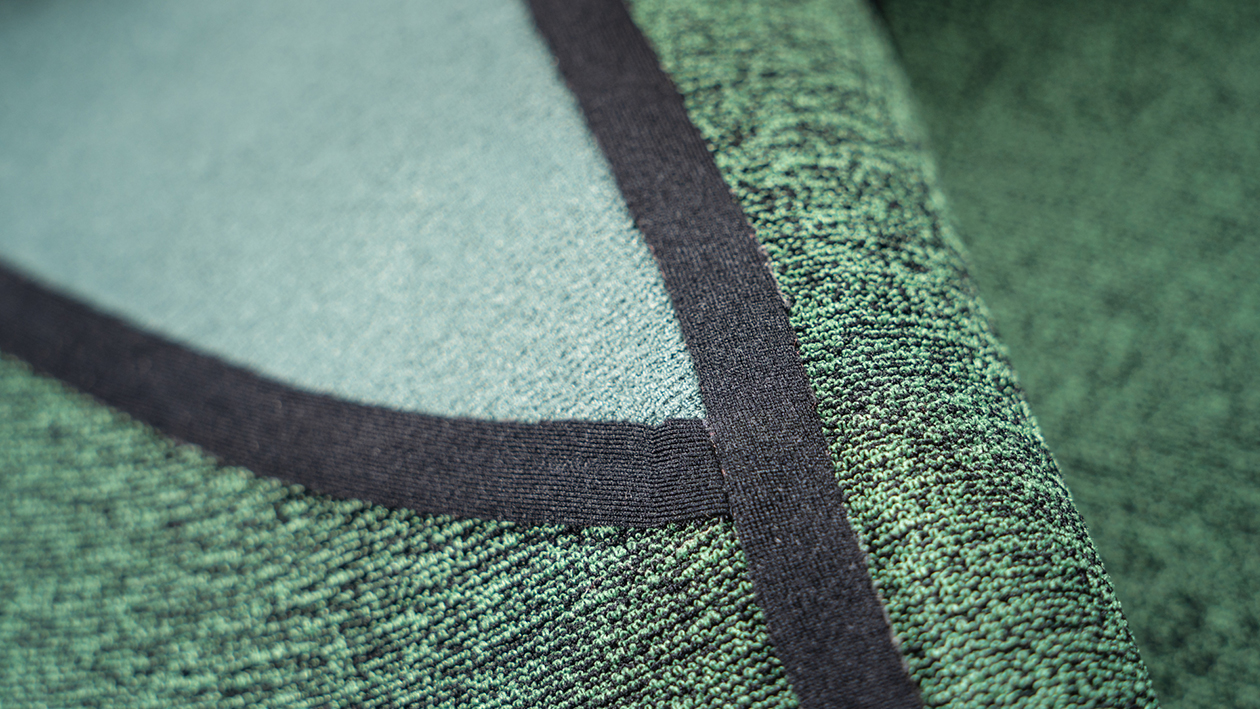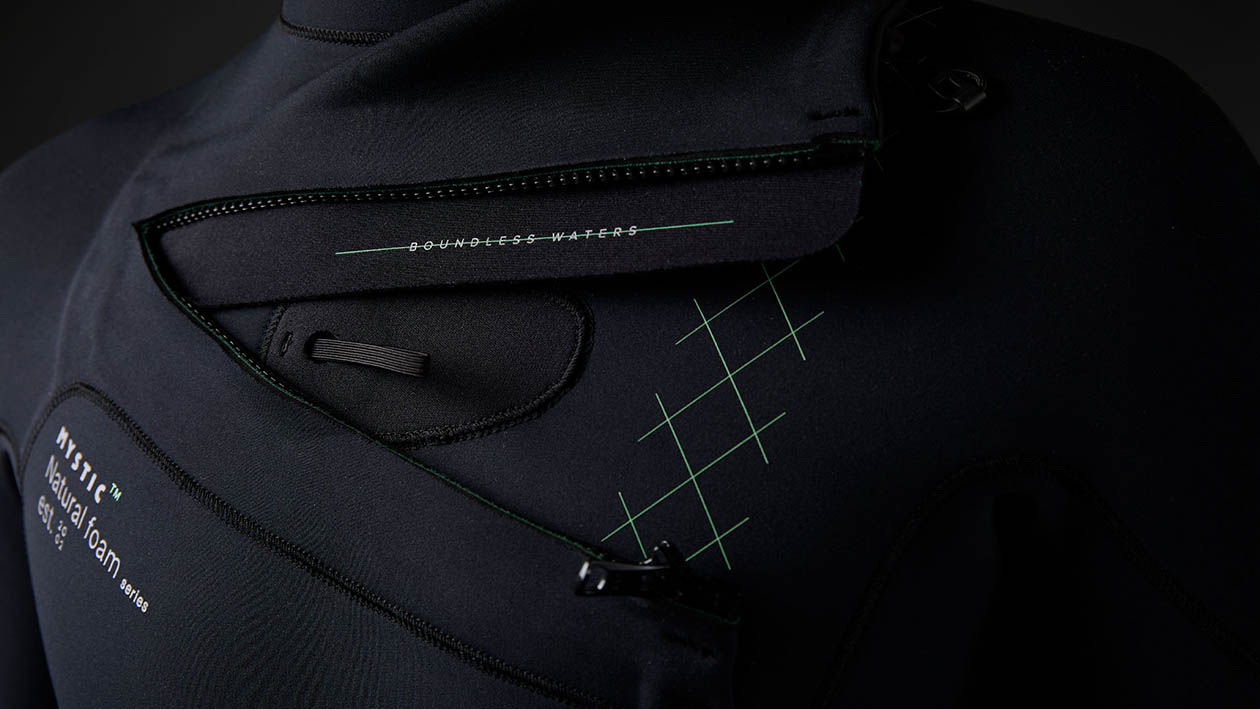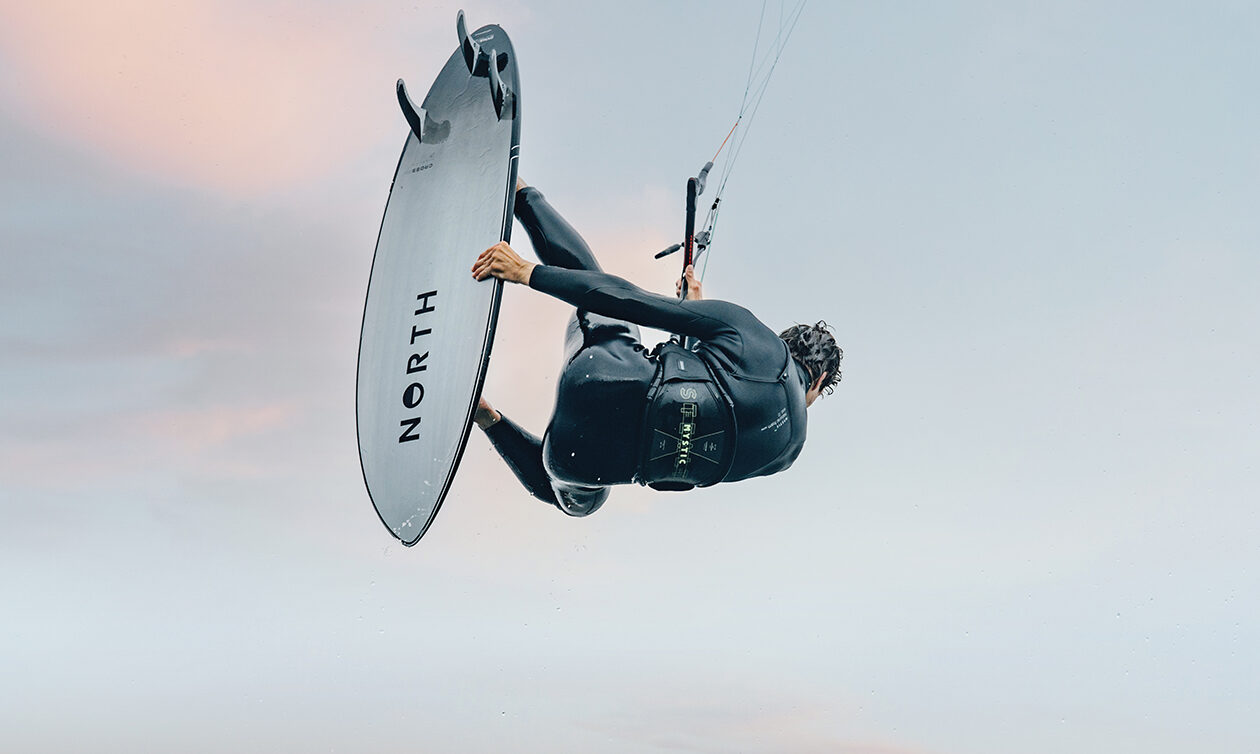The Green Room: MYSTIC Evolve
Mystic have released their lowest impact wetsuit yet, the Evolve. It’s better for the planet, being made from renewable ingredients…
Photos Antonio Herrera Trujillo, Storm Jansen and Vincent Schaap
When you purchase gear through links on our site, we may earn a small commission. Here’s why you can trust our tests and our affiliate partner.

Mystic have released their lowest impact wetsuit yet, the Evolve. It’s better for the planet, being made from renewable ingredients…
Photos Antonio Herrera Trujillo, Storm Jansen and Vincent Schaap
What was your motivation for adding the Evolve wetsuit to your range?
Petroleum-based wetsuits, also known as neoprene, have been the industry standard since the 1950s. And to be fair, they changed everything. They’ve let us surf, kite, windsurf and foil year-round in cold-water regions. They’ve taken us to sub-zero zones. They’ve kept us out all day, pushing limits without worrying about hypothermia (though ice-cream headaches do still happen on occasion!). As our Design Director, Edwin Schaap, says, “A wetsuit is what makes our sports possible. It lets us go out in any season, in any conditions. Without a good wetsuit, you can’t ride the way you want to.” As materials and tech improved, so did our expectations for warmth, stretch and comfort. But alongside performance, the pressure to reduce environmental impact was building. That’s why we set out to build a wetsuit that keeps up with high-performance riding – while doing better by the planet.

What’s the alternative to neoprene?
Renewable materials – ingredients that can replenish over time if sourced responsibly. That’s where natural rubber comes in. It’s harvested from rubber trees as latex sap, then refined into solid sheets. These sheets are whipped with air and baked into a flexible foam, which is later laminated with fabric and cut into panels to be stitched or glued into wetsuits. Nowadays, you’ll see more wetsuits are being made with natural rubber and many of them are getting better. But as riders who obsess over how wetsuits feel, our conclusion was simple: they didn’t stretch enough. Our goal is to make your wetsuit feel like a second skin, so you can move freely and stay in the water as long as you can.
There’s been a lot of hype about limestone neoprene. What are your thoughts on this?
Our top-range wetsuits use premium limestone from Yamamoto, a material known for its unbeatable warmth, lightness and stretch. If you’ve ever worn one of our Yamamoto suits, you know just how high-performance they feel in the water. Unlike petroleum-based neoprene, limestone-based neoprene starts with a natural source. While it still requires energy to produce and isn’t renewable, its durability and performance mean you’ll get more wear, making it a longer-lasting choice. But our ongoing search for better alternatives led us to natural foam, a material that outperformed everything else we tested. It’s lighter, softer and inherently more flexible. It’s made from USDA-certified ingredients and renewable sources like natural rubber, sugarcane, oyster shells and non-edible plant oils. That unique composition means the stretch isn’t forced – it’s built in. It also comes with a significantly lower carbon footprint compared to traditional petroleum-based neoprene.

Tell us more about those ingredients and the breakdown of the Evolve.
Each ingredient plays a role. Natural rubber forms the base, giving the foam its structure and elasticity. Sugarcane contributes flexible polymer bonds that support stretch. Ground oyster shells add strength and durability. And the plant oils soften the foam and boost its flex too. Timon Staal, our Lead Wetsuit Designer, said, “We tried so many different foams out there. We developed laminates with all different kinds of material compositions to see which one was best. Natural Foam, without a doubt, was the best.” Then there are the linings of the Evolve wetsuit – these are made from recycled polyester with dope-dyed yarns — a process that reduces both water and energy use during production. Our goal is to reach 100% recycled yarn content in these linings, using post-consumer polyester made from plastic bottles wherever possible. We choose polyester over recycled nylon, which is often made from production waste. The full fabric breakdown of the Evolve is: 87% recycled polyester, 9% dope-dyed polyester, 4% spandex.
Let’s talk about the goal to give your wetsuits more stretch and how you went about it.
Stretch isn’t just about range. It’s about recovery. A wetsuit needs to flex and bounce back, session after session, without bagging out or breaking down. Some early alternative foams had as little as half the elongation of traditional neoprene. That might sound minor, but you feel it every time you paddle out or duck dive. Stretch starts with the foam, but how the suit is constructed matters just as much. Panel shape, seam placement, tension zones – it all plays a role in how the suit moves with you. “Developing the laminate, the inside and outside layers of the suit, is difficult. The biggest challenge this time was the glue. We had an entire bad batch where too much glue revoked all the stretch we’d built into the previous version,” said Timon.
To get it right, we mapped everything digitally, used 3D design tools, and ran simulations before ever cutting a prototype. Then we made one wetsuit. Broke it. Built ten more. And finally got it in the water. Timon explains, “To properly compare foams, you need to control conditions… room temperature, humidity, even how it’s worn during sessions. We tested different foam thicknesses under the same conditions to measure stretch and performance.” Durability matters here too. A wetsuit that holds up season after season is better for the planet and an investment for the rider. The Evolve includes details like stretch taping throughout, GBS seams to prevent water entry, abrasion-resistant Hex-tech kneepads, and non-slip cuffs, which all help the suit perform over time. These technical features might seem small on their own, but together, they make a big difference in how long your suit lasts – and how it feels in the water, session after session.
So, what next – where do you go from here?!
A perfectly green wetsuit would be made from fully renewable, regenerative materials, produced with zero emissions, and fully recyclable at the end of its life. The industry isn’t quite there yet. Cost is part of the equation too. Building a wetsuit from lower-impact materials and premium construction methods isn’t cheap. One of the hardest parts is keeping it accessible to riders without sacrificing performance. Our Design Director, Edwin Schaap, says, “I think it’s going in the right direction, if you look at most brands. The question is always how we can make these tiny steps throughout all the wetsuits we’ve got, without sacrificing performance.” The Evolve isn’t the finish line. It’s a milestone. A step forward in what wetsuits can be, how they can be made, and how they feel in the water. We’re already exploring new formulations, refining the foam, and pushing for even higher renewable content – all without giving up the second-skin feeling.

You can get the latest goodness from the world of kiteboarding by subscribing to our print edition. You'll get 5 packed issues, plus a free tee and free digital access. And you'll be directly helping with our sustainability efforts too!
Check it out now